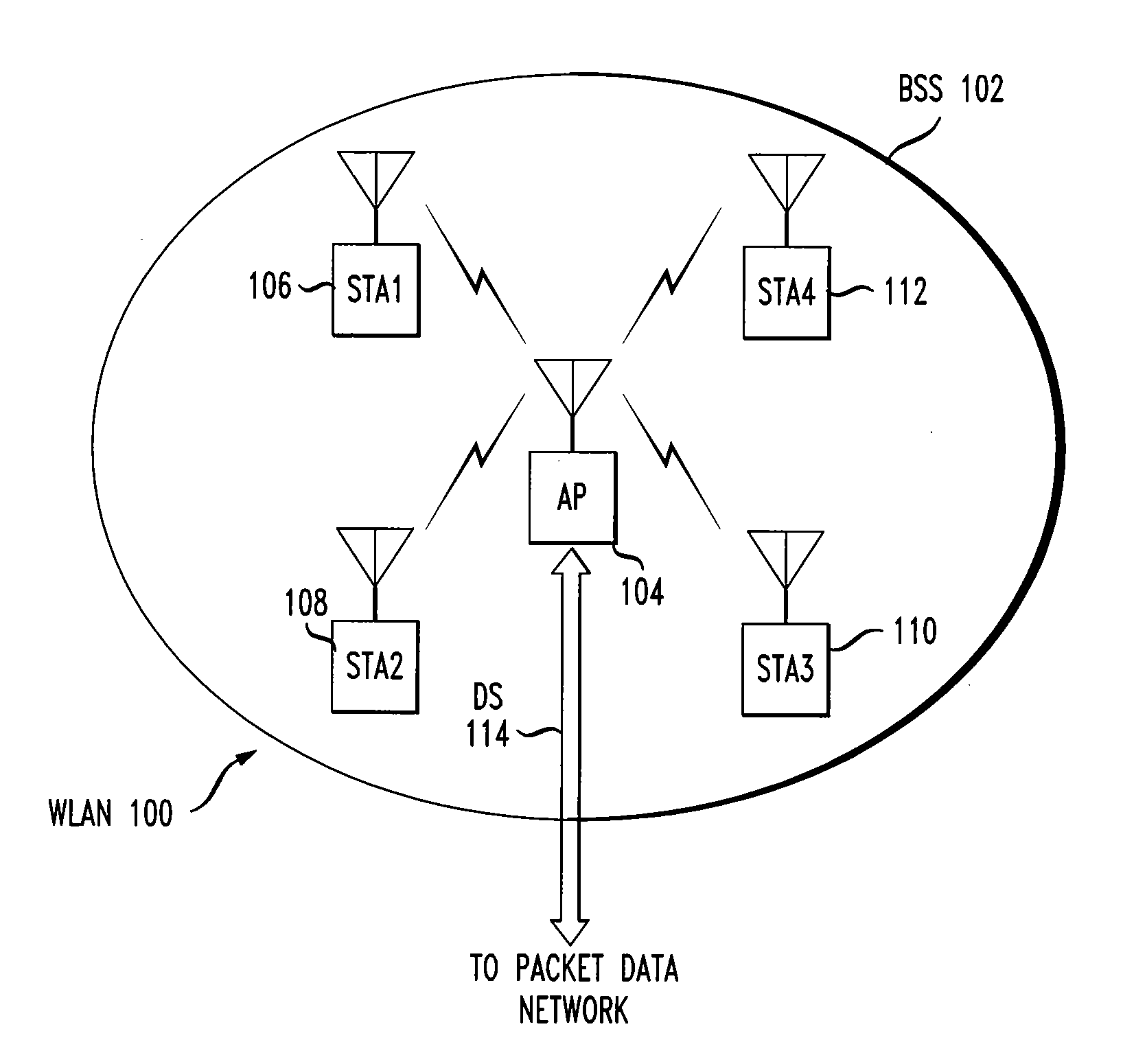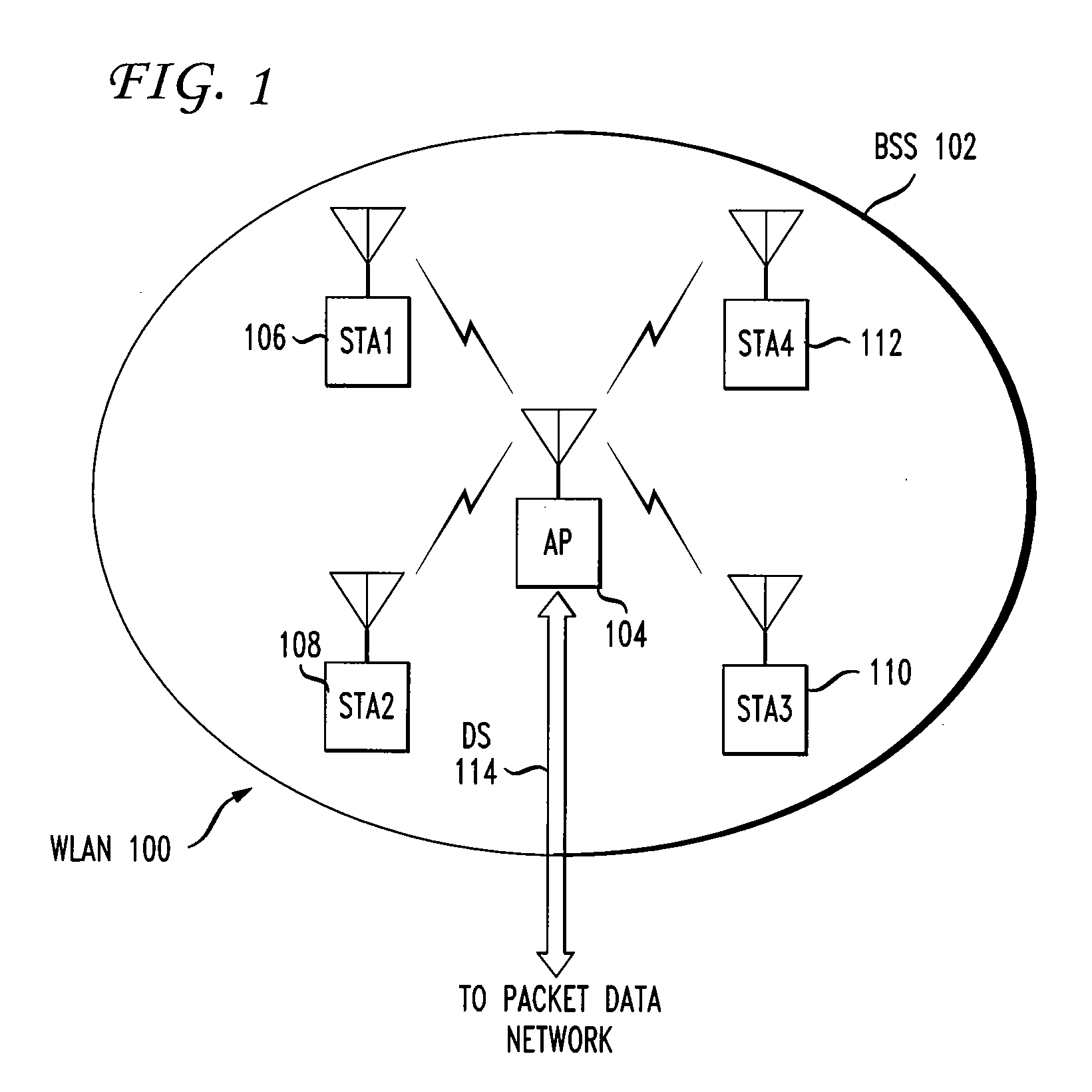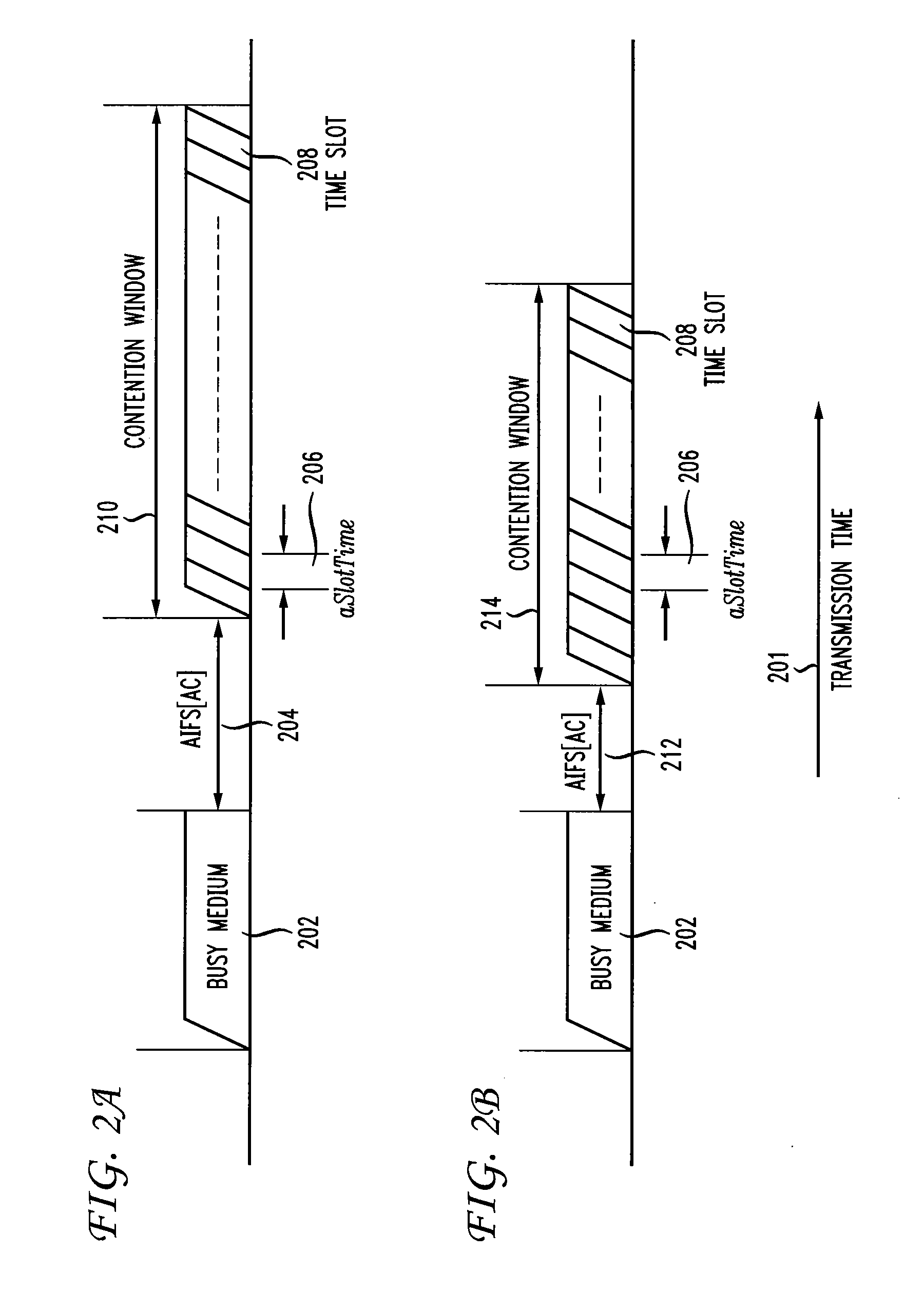Control of Quality of Service in Overlapping Basic Service Sets in Wireless Local Area Networks
a technology of wireless local area network and control of service quality, applied in data switching networks, frequency-division multiplexes, instruments, etc., can solve problems such as unintentional overlap, complex management of scheduled access, and ineffective edca,
- Summary
- Abstract
- Description
- Claims
- Application Information
AI Technical Summary
Benefits of technology
Problems solved by technology
Method used
Image
Examples
Embodiment Construction
[0024]FIG. 1 shows the basic network architecture of a wireless local area network WLAN 100 with a single access point AP 104. In the examples below, WLANs refer to WLANs conforming to IEEE 802.11 standards. One skilled in the art, however, may adapt embodiments of the invention to other WLANs. The nomenclature of the IEEE 802.11 standards is used herein. In a WLAN, any addressable wireless device may be called a station (STA). Stations may be fixed, portable, or mobile. A portable STA is a wireless device that is capable of being moved from place to place, such as a laptop which may be moved from one desk to another. During operation, however, a portable device is stationary. A mobile STA is a user device, such as a laptop or personal digital assistant, that is in actual motion during operation. In FIG. 1, four stations, STA1106-STA4112, are shown. The stations STA1106-STA4112 communicate over radiofrequency (RF) channels with access point AP 104, which connects via distribution sy...
PUM
 Login to View More
Login to View More Abstract
Description
Claims
Application Information
 Login to View More
Login to View More - R&D
- Intellectual Property
- Life Sciences
- Materials
- Tech Scout
- Unparalleled Data Quality
- Higher Quality Content
- 60% Fewer Hallucinations
Browse by: Latest US Patents, China's latest patents, Technical Efficacy Thesaurus, Application Domain, Technology Topic, Popular Technical Reports.
© 2025 PatSnap. All rights reserved.Legal|Privacy policy|Modern Slavery Act Transparency Statement|Sitemap|About US| Contact US: help@patsnap.com



